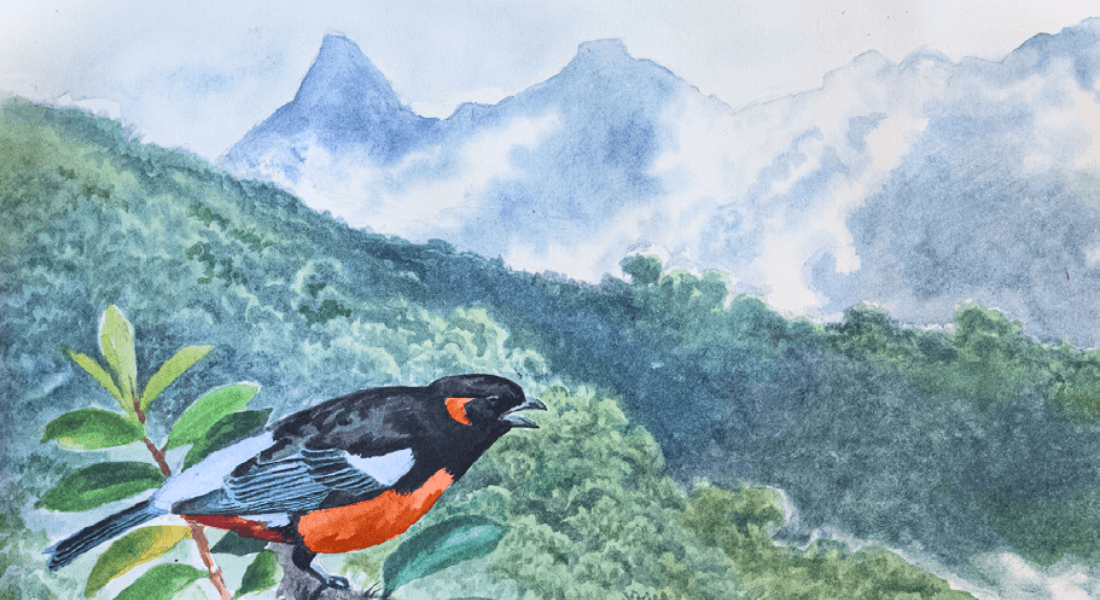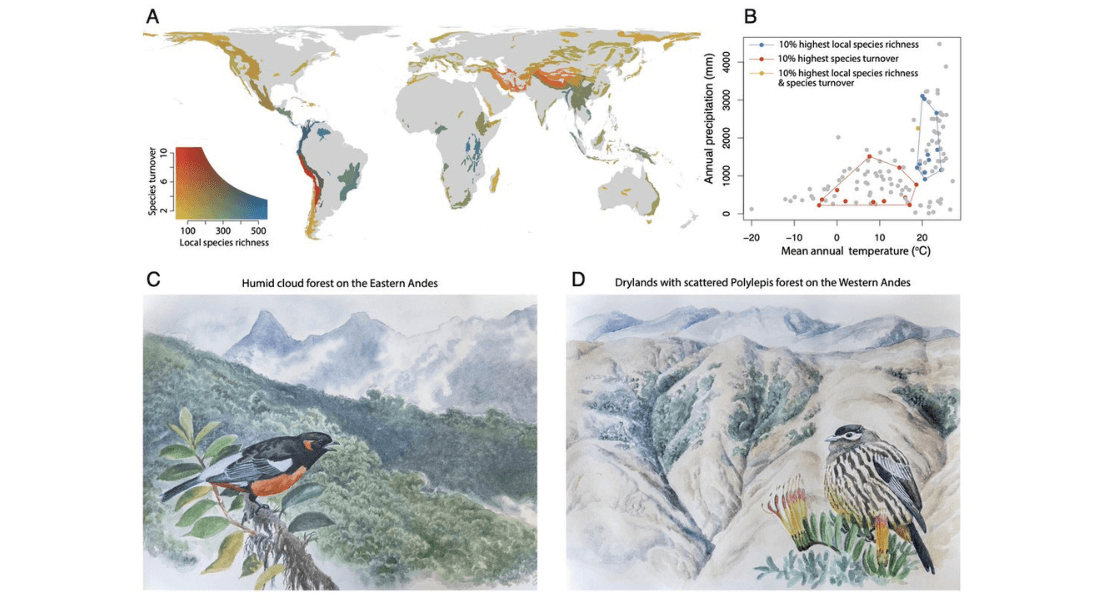New study on global biodiversity hotspots
Based on millions of distribution data, researchers from the Center for Macroecology, Evolution and Climate examine the relationship between local species richness and turnover of species in the world’s mountain ranges, revealing unexpected patterns that may redefine our understanding of global hotspots of biodiversity.

What causes mountains’ disproportional contribution to global species diversity has yet to be disclosed and has been referred to as “Humboldt’s enigma”, named after the famous 19th century scientist Alexander von Humboldt. Typically, the hottest of the hotspots of species richness in mountain regions are assumed to be caused by a combination of having both high local species richness and high changes (i.e. high turnover) in species composition between localities within mountain regions.
However, a new study finds unexpected patterns of species richness and species turnover associated with global hotspots of biodiversity when analysing the distribution data of 9,788 bird species in the worlds 134 mountain regions.
Shedding new light on the puzzle
Contrary to expectations, the new results suggest that the highest levels of local species richness and turnover are not found in the same mountain regions, but in different mountain regions. The study thus shed new light on solving the puzzle of what determines the extreme biodiversity of hotspots in tropical mountains called the “Humboldt’s enigma”.
The study is published in January in the Proceedings of the National Academy of Sciences of the USA (PNAS) by Jesper Sonne and Carsten Rahbek, Center for Global Mountain Biodiversity at the Globe Institute, University of Copenhagen.

Giant conebill (Conirostrum binghami) is restricted to the patches of Polylepis forest in the High Andes, a global biodiversity hotspot comprising various levels of local species richness and turnover. Photo: Jesper Sonne.
Discrepancy in local species richness and turnover
The study also found, as a new scientific recognition, that the mountain regions with highest local species richness was found in warm and humid climates whereas the highest turnover in species composition was mostly found in cool, dry climates with open grassland or rocky habitats. Thus, the highest levels of local species richness and turnover are not just found in different mountain regions but are also associated with distinct climates and habitat types.
-The combination of high local species richness and geographic turnover in species composition is a premise for the current explanations of global biodiversity hotspots in tropical mountains, a premise that our results contradict, says Professor Carsten Rahbek.
Only one mountain region combined both extraordinarily high local species richness and high species turnover, resulting in the most prominent global hotspots for avian biodiversity, the Northern Andes of South America. This mountain region is characterised by a complex topography encompassing an enormous variety of different habitats and climate conditions.
-The most species-rich mountain regions are associated with distinct environmental factors depending on their underlying local richness and turnover levels - a pattern that traditional analyses of overall regional species richness do not detect. Thereby, the results bring new insight into the ingredients for building global hotspots of biodiversity and give an idea of why we persistently struggle to explain the aggregation of species in tropical mountains, explains Postdoc Jesper Sonne.

Example of two mountain regions with respectively extraordinary high local species richness and turnover. The East Andean Mountain slope with Anisognathus igniventris representing a species that occupies the species-rich cloud forest belt of the entire region (left). By comparison, the West Andean Mountain slope (right) has a dryer climate that limits the local species richness. The sparse and patchy configuration of forest habitat in the Western Andes contains many small-ranging species such as the Zaratornis stresemanni contributing to high species turnover within the mountain range. Drawings by Jon Fjeldså.
About the study
J. Sonne, C. Rahbek, Idiosyncratic patterns of local species richness and turnover define global biodiversity hotspots. PNAS 121 (2024). https://doi.org/10.1073/pnas.2313106121
Contact
Professor Carsten Rahbek
Postdoc Jesper Sonne
